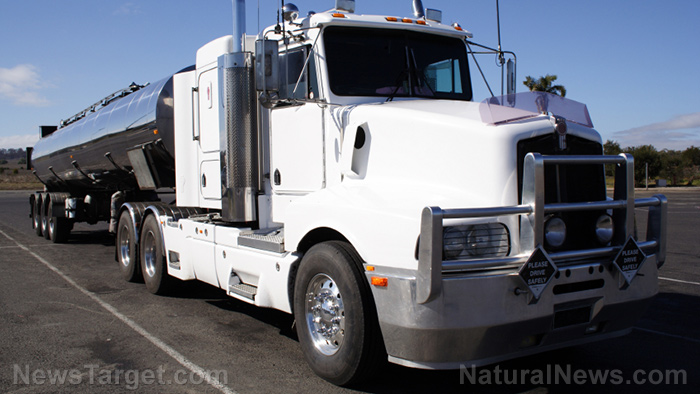Argentina sees boom in lithium production as Chile tightens control
04/27/2023 / By Belle Carter

Sitting within the so-called “lithium triangle,” Argentina’s strong pipeline of lithium projects seeks to unlock a wave of production that could see its output of the key electric vehicle battery metal triple within the next two years.
The projects are soon to go online in the mountainous north of Argentina, the world’s fourth-largest producer of lithium, a silvery-white metal. It has been luring investments from Canadian and Chinese mining firms with a regional and market-led model.
Its neighbor Chile, which is the region’s top lithium producer, recently announced its plans for a state-led public-private model, which has scared some investors. Another neighbor, Bolivia, has long retained strong control over its enormous, but mainly undeveloped resources. Meanwhile, Mexico nationalized its lithium reserves last year.
“Argentina has granted concessions to projects for the last 10 years,” said Franco Mignacco, president of Argentina’s Chamber of Mining Business. “That’s why today we have this level of lithium investment and development and the chance of growth.”
Despite the fact that Argentina’s state energy company YPF began exploring lithium last year, the government has pushed to increase export revenues through mining, a rare bright spot despite economic turbulence, and the sector has been mostly driven by a private company and frequent approvals of new projects.
Mignacco estimated that the current 40,000 tons of lithium carbonate production could triple by 2024-2025 to 120,000 tons, which could take it past China and closer to Chile, which currently produces some 180,000 tons per year. He added that this would be driven by new projects coming online on top of the two currently in production. Buenos Aires has six lithium projects under construction and 15 in the advanced exploration or feasibility stage.
Argentina’s expected surge in production would likely come from the expansion of the U.S. firm Livent’s Fenix project in Catamarca and Australian Allkem Ltd’s Salar de Olaroz mine in Jujuy. The Cauchari-Olaroz project, owned by China’s Ganfeng Lithium Co. and Canada’s Lithium Americas Corp., is set to begin the production with a capacity of 40,000 tons of lithium carbonate in the second half of 2023.
“Argentina’s lithium sector has thrived through a decentralized, pro-market strategy,” said Benjamin Gedan, director of the Latin America program at The Wilson Center.
Sodium-ion batteries seen to replace lithium EV batteries in 2023
Meanwhile, China recently announced the next big innovation in rechargeable batteries: replacing lithium with sodium – a far cheaper, less dense and more abundant material.
Sodium, which is found everywhere, sells for one to three percent of the price of lithium and is chemically very similar. Recent breakthroughs mean that sodium batteries can now be recharged daily for years. The energy capacity of sodium batteries has also increased. Additionally, sodium-ion batteries have considerably lower energy density than lithium batteries. It can keep almost all of the charge when temperatures fall far below freezing, something lithium batteries normally can’t do. (Related: LITHIUM mining for electric vehicles is incredibly destructive to the environment and about as far from “green” as you can imagine.)
Chinese battery manufacturer CATL recently announced that sodium-ion batteries will be installed in the Chery iCAR due to go on sale by the end of this year. Another EV maker, BYD, announced that sodium-ion batteries will be in mass production in the second half of the year beginning with the Seagull, a battery electric subcompact car.
The Biden administration’s Inflation Reduction Act, which was passed by Congress in August 2022, was designed primarily to offset China’s dominance of lithium battery production all over the world, but a switchover to sodium-ion batteries may make the nation’s control over battery manufacturing even greater.
The consulting firm called Benchmark Minerals further revealed that of the 20 sodium battery factories planned or already under construction around the world, 16 are located in China. By 2025, the communist country is expected to have nearly 95 percent of the global capacity to make sodium batteries.
Watch the video below that talks about electric vehicle batteries’ detriments to health and the environment.
This video is from the GoneDark channel on Brighteon.com.
More related stories:
Electric vehicles are unreliable and not cost-efficient – especially in cold weather.
Green cult now going after lithium – the key mineral used in batteries for electric vehicles.
Electric vehicles have more quality issues than combustion engine cars, new study finds.
Electric vehicles are a SCAM – here’s why.
Sources include:
Submit a correction >>
Tagged Under:
Argentina, big government, bolivia, bubble, Chile, China, economic riot, electric vehicles, energy supply, EV, green deal, lithium batteries, lithium mining, Lithium Triangle, market strategy, power, products, renewable energy, sodium-ion battery, supply chain, white gold
This article may contain statements that reflect the opinion of the author
RECENT NEWS & ARTICLES
COPYRIGHT © 2017 INVENTIONS NEWS
















